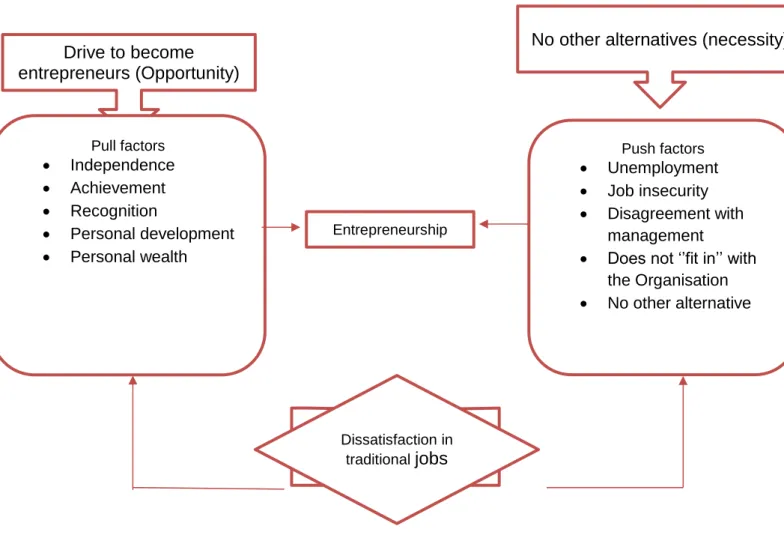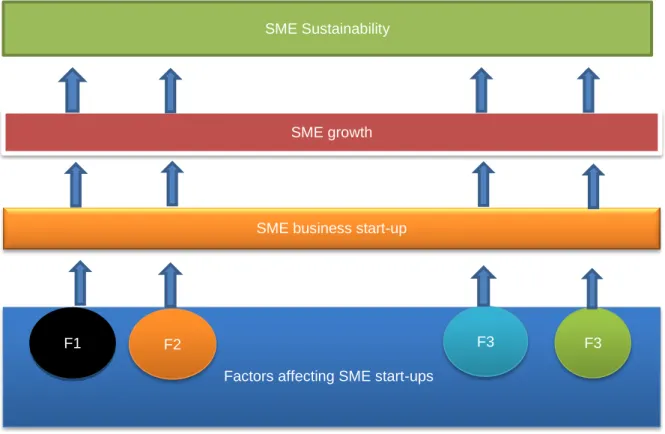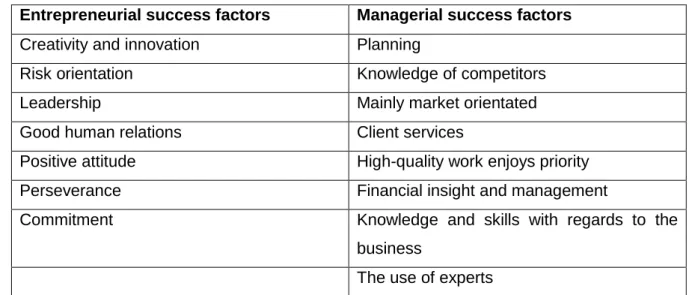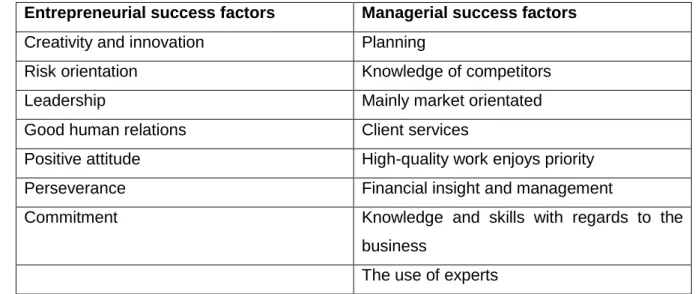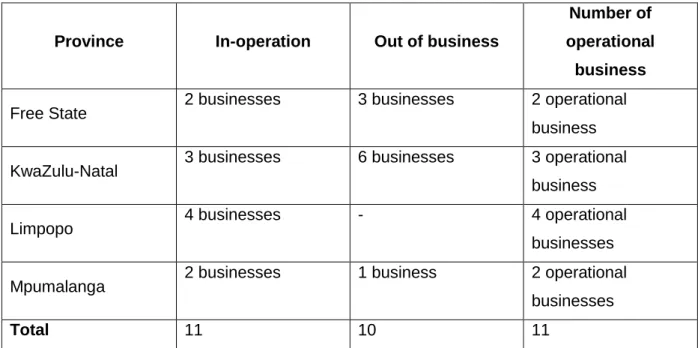Therefore, challenges related to this study are considered to be factors for small scale mining contractors in South Africa. Small-scale mining contractors are formerly disadvantaged people who operate a small-scale mine in South Africa.
INTRODUCTION AND BACKGROUND
Despite the good prospects that small mining entrepreneurs seem to have, they do not succeed. Support structures for small scale mining contractors are outlined in a report by the South African Department of Mineral Resources.
STATEMENT OF THE RESEARCH PROBLEM
He recommended that it be created for the minerals and other products produced by small-scale mining operations. Despite government interventions, small-scale mining entrepreneurs face numerous challenges during both the start-up and growth phases of their business.
MAIN OBJECTIVE
Sub objectives
MAIN RESEARCH QUESTION
Sub research questions
SIGNIFICANCE OF THE RESEARCH
SCOPE OF THE RESEARCH
Delineation
Delimitation
RESEARCH PLAN AND DESIGN
- Research design
- Research population
- The sampling design
- Research procedure
- Reliability and validity
Using the list of small scale mining entrepreneurs with their contact details in the database, this study used random sampling. There were 31 small-scale mining entrepreneurs in six different provinces in the MINTEK database.
ETHICAL CONSIDERATION
EXPECTED OUTCOME
CONCLUDING REMARKS
This study explored the challenges small scale miners face when starting mining businesses, the limited prospects entrepreneurs have, the success factors and the support structures available to mining entrepreneurs in SA. Given the informal nature of small-scale mining operations, mining entrepreneurs are hard to find.
INTRODUCTION
OVERVIEW OF MINING
- Mining defined
- Small-scale mining
- Small-scale mining entrepreneurs
- Global mining
- Mining in Southern Africa
- Historical development of mining in SA
As a result, the mining industry accounted for over 13% of the DRC's gross domestic product (GDP) (Yager, 2010:1). The country is rich in mineral resources, but the majority of the population cannot take advantage of the business opportunities that these represent (Fauconnier & Mathur-Helm, 2008: 2; Ntim & Soobaroyen Tangri & Southall, 2008: 699).

THEORETICAL FRAMEWORK UNDERPINNING THIS STUDY
Push and pull factors of small-scale mining entrepreneurs
People are pushed into entrepreneurship because of their circumstances while some are drawn into entrepreneurship by opportunities (Nieman & Nieuwenhuizen, 2009:34). It appears that people are often drawn into entrepreneurship by the need for independence or for financial rewards (Evan & Dean, 2002:1).
Push factors to entrepreneurship
As previously stated, small-scale mining entrepreneurs have no other alternative given the scarcity of work in rural communities. Therefore, it can be said that small-scale mining entrepreneurs are pushed into entrepreneurship because they have no other choice.
Pull factors to entrepreneurship
Therefore, it is fair to say that small-scale mining entrepreneurs are not drawn into entrepreneurship. Therefore, small-scale mining entrepreneurs are not attracted to entrepreneurship because their desire for personal wealth.
CHALLENGES OF SMALL-SCALE MINING ENTREPRENEURS IN SA
- Geological challenges
- Financial challenges
- Human capital challenges
- Marketing challenges
- Technological challenges
- Legal challenges
- Organisational challenges
The financial challenges faced by small-scale mining entrepreneurs are not limited to lack of start-up capital. Many small scale mining entrepreneurs lack the necessary skills needed to run a small scale mining business.
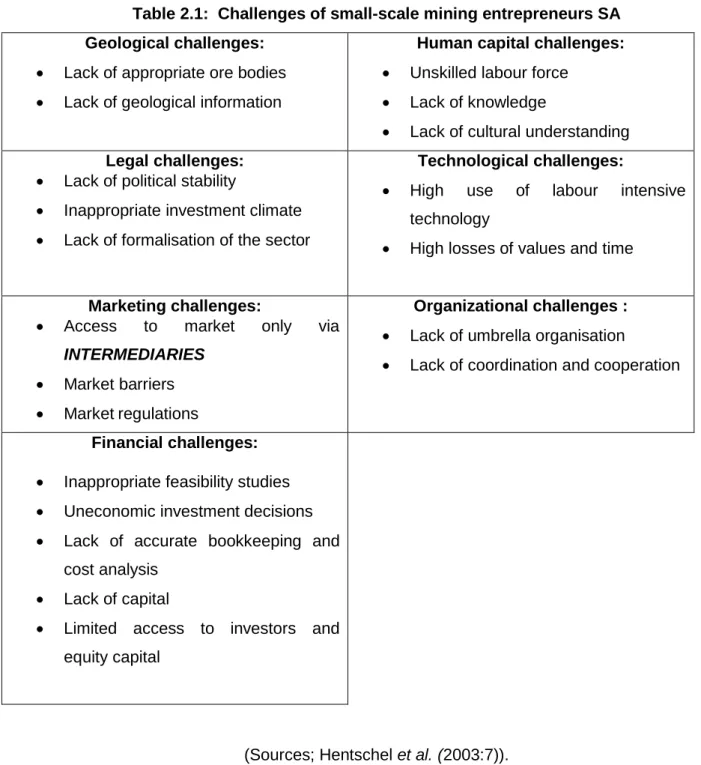
CONCEPTUALISING THE CHALLENGES OF SMALL-SCALE MINING
PROSPECTS FOR SMALL-SCALE MINING ENTREPRENEURS
Prospects
- Legal and administrative prospects
- Economic prospects
- Moral prospects
- Entrepreneurial prospects
It also illustrates that the prospect of successful small-scale mining depends on the willingness to operate in a legal environment. These prospects depend on compliance with legal legal requirements so that small-scale mining entrepreneurs can obtain mining permits. Small-scale mining entrepreneurs will have real economic prospects only when they are owned by legal entities.
In addition, small mining entrepreneurs could have access to financial security and skilled personnel, which will encourage business success.
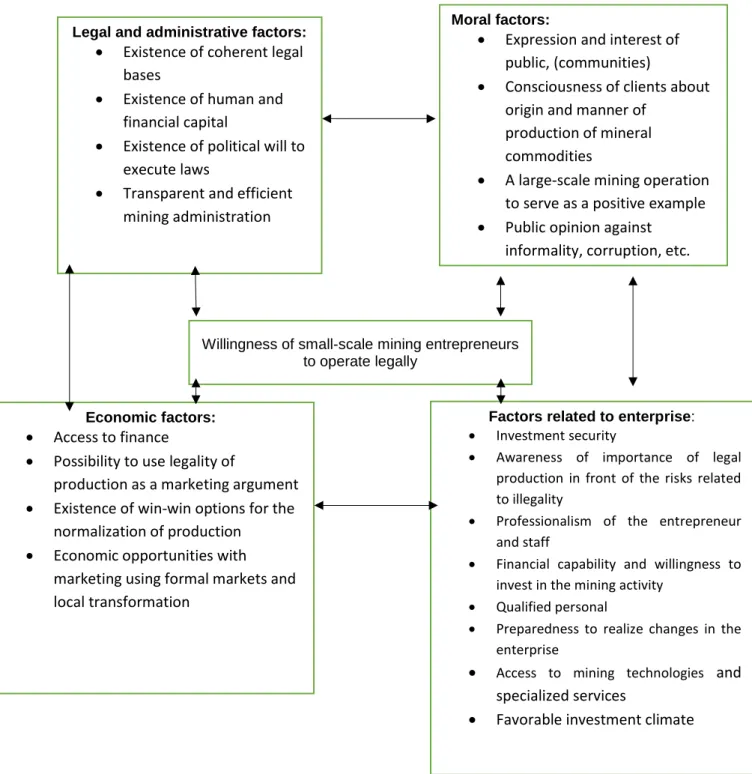
SUPPORT STRUCTURES FOR SMALL-SCALE MINING ENTREPRENEURS
Reasons to support small-scale mining entrepreneurs
Hilson, citing the International Labor Organization (ILO), reveals that in sub-Saharan Africa, more than ten million people are directly employed in small-scale mining. This means that the number of people engaged in small-scale mining can increase the amount of mineral deposits that are mined. Additionally, more people engaged in small-scale mining means more money circulating in the economy, increasing GDP (Veiga, n.d:1).
Despite these strong arguments for it, small-scale mining has attracted much controversy.
Reasons to oppose mining entrepreneurs
First, small-scale miners enable people living in extreme poverty to be their own source of income. Small-scale mining around the world provides a source of income to more than 30 million people and is responsible for an estimated 20% of gold global production (ibid.). As a result, small-scale mining entrepreneurs cannot obtain the necessary resources and technology needed to reduce the release of pollutants into the atmosphere or other impacts on the environment.
Smith, Chitamweba, Mkumbo, Machiwa, Tesha and Beinhoff explain that small-scale mining operations use mercury to extract minerals, causing water and air pollution in developing countries.
Support structures for mining entrepreneurs
SUCCESS FACTORS FOR A SMALL-SCALE MINING BUSINESS
Success factors
The entrepreneurial driving force for success is that an entrepreneur operating a small mine or any other business must be creative and innovative in running the business. Most importantly, the drivers of entrepreneurial success require dedication and perseverance from entrepreneurs regardless of the challenges presented by small-scale mining operations or any business. To be successful, small mining entrepreneurs should know their competitors and stay focused on the market and provide superior service to their customers by exceeding their expectations.
Most importantly, entrepreneurs must use a business model in order to be able to operate their businesses efficiently and effectively.
Business model
According to Osterwalder and Pogneur (2010:14), a business model is the rationale for a business establishment that describes how the proposed start-up aims to create, deliver and capture value for its customers. Then, in step 2, the company buys a contractor to build the computer parts to the customer's specifications. The assumption underlying a business model is that, if properly designed, business success is possible.
The implication is that small-scale mining entrepreneurs need a sound business model to make their ventures prosper.
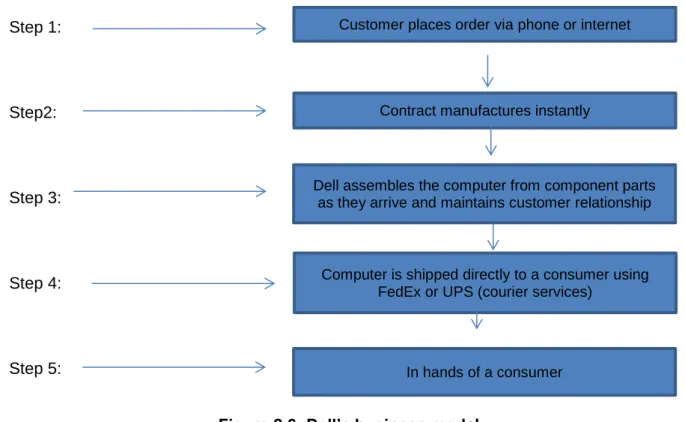
SUMMARY
INTRODUCTION
RESEARCH DESIGN
A qualitative research approach is useful when a study seeks to gain the perspective of participants by exploring their own written or spoken feedback about a phenomenon (ibid.).
RESEARCH POPULATION
THE SAMPLE DESIGN
Using the list of small scale mining entrepreneurs and the contact information in the database, this study used random sampling. Using the information from the MINTEK database, 21 small scale mining entrepreneurs spread across four provinces were mapped as the sampling frame. The original sample of 21 small scale mining contractors mentioned above was randomly selected from the database obtained from MINTEK offices in Johannesburg on 9 October 2014.
Once selected, each of the small mining entrepreneurs was called on the phone and clearly explained the benefits and what would be required of those who participated in the study.
BACKGROUND OF THE STUDY AREA: SA
- Free State: QwaQwa
- KwaZulu-Natal (KZN)
- Mpumalanga
- Limpopo
The interviews were conducted in QwaQwa, a former Bantustan, which is now part of the Free State. This includes the capital city, the main languages spoken in that province and the size of the population, as well as the percentage it makes up of the total size of SA. The following table provides information about the Limpopo province: capital city, main languages spoken, population of the province and the percentage of the total size of the province area.
The main language used is Sesotho, which is the mother tongue of 52% of the population.
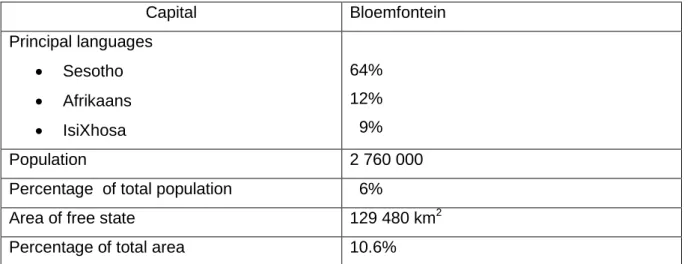
DATA COLLECTION APPROACH
The primary source of data collection in this study was the selected small-scale mining entrepreneurs. Prior to the interviews, firm agreements had to be made with the small-scale mining entrepreneurs. After an interview, small-scale mining entrepreneurs showed the researcher around the mining site.
They took photos proving that the small-scale miners were actually using labor-intensive equipment.
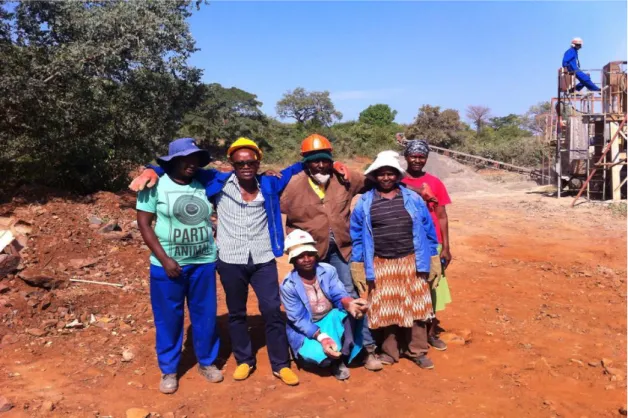
RELIABILITY AND VALIDITY
Reliability
Validity
DATA ANALYSIS
ETHICAL CONSIDERATIONS
SUMMARY
INTRODUCTION
FINDINGS
THEMES
FINDINGS OF THE PERSONAL INTERVIEWS CATAGORISED ACCORDING TO
According to the respondents, 64% of small-scale mining entrepreneurs were the sole managers and owners of their business. The 64% of the small-scale mining entrepreneurs interviewed who considered themselves sole proprietors met the necessary criteria. The small-scale mining entrepreneurs who have no business partners are unlikely to expand their management powers or their businesses.
Thirty-six percent (36%) of small mining entrepreneurs were either in partnerships or had joined cooperatives: therefore, a significant proportion of small mining owners faced fewer challenges than their peers who were sole proprietors.
NUMBER OF YEARS IN OPERATION
Summary of the findings based on the verbatim responses
Thirty-seven percent (37%) of the small-scale mining entrepreneurs had already been in business for seven years, while 18% of the small-scale mining entrepreneurs had been in business for nine years. There were a further 9% of the small-scale mining entrepreneurs who had been operating for more than ten years. Another 9% had already been in business for nine years. has been in business for eight years.
Even though 37% of small-scale mining entrepreneurs had been in business for more than seven years, they were still hampered by lack of proper equipment and lack of finance.
CHALLENGES
- Summary of the findings based on the verbatim responses
- Summary of the findings based on the verbatim responses
- Summary of the findings based on the verbatim responses
- Summary of the findings based on the verbatim responses
- Summary of the findings based on the verbatim responses
- Summary of the findings based on the verbatim responses
- Summary of the findings based on the verbatim responses
- Summary of the findings based on the verbatim responses
Eighteen percent (18%) of small-scale mining entrepreneurs revealed that their challenges revolved around climate issues. Their aim was to determine the challenges facing small-scale mining entrepreneurs in SA. Fifty-five percent (55%) of small-scale mining entrepreneurs said they had no marketing challenges.
Eighteen percent (18%) of small-scale mining entrepreneurs admitted that they were polluting the environment.

SUPPORT
Summary of the findings based on the verbatim responses
Fifty-five percent (55%) of small-scale mining entrepreneurs agreed that support structures are available, while 45% of mining entrepreneurs stated that support structures are not available. Fifty-five percent (55%) of small-scale mining entrepreneurs in this survey acknowledged that they had been supported in the past and that the support had been helpful. However, there is no doubt that support structures are available for small-scale mining entrepreneurs.
What business support do small mining entrepreneurs need to grow their businesses.
Summary of the findings based on the verbatim responses
If they don't know, for example if they receive money from the government, the government should monitor, because the government just gives funds and goes without monitoring. Small-scale mining entrepreneurs noted that they also needed the support of local chiefs rather than their opposition. Local chiefs were well known for opposing small-scale mining entrepreneurs if they did not meet their demands.
For example, local chiefs required small mining contractors to buy alcohol whenever they visited small mining contractors' mine sites.
Summary of the findings based on the verbatim responses
SUCCESS FACTORS
- Summary of the findings based on the verbatim responses
- Summary of the findings drawing from the quotations
- Summary of the findings drawing from the foregoing quotations
- Summary of the findings based on the verbatim responses
Small-scale mining entrepreneurs suggested that for their operations to be sustainable, they must have appropriate equipment to stay. To be precise, 9% of small-scale mining entrepreneurs noted a lack of equipment as a limiting factor of success. Another 9% of small-scale mining entrepreneurs were confronted with false land claims from trust scammers.
In addition, 18% of mining entrepreneurs indicated that small-scale mining entrepreneurs should undergo continuous training.
SUMMARY
Eighteen percent (18%) of small mining entrepreneurs said that to remain sustainable, mining entrepreneurs need to have a good customer base and market share. Nine percent (9%) of small mining entrepreneurs highlighted the important role that “being passionate” about the work they do plays in sustaining their success. The findings of this study further reveal that small scale mining entrepreneurs may only be able to make a profit when they have been in operation for a period longer than five years.
According to the findings of this study, the government is doing everything in its power to ensure that small-scale mining entrepreneurs get the help they need to succeed.
INTRODUCTION
A BRIEF EXPOSITION OF THE PRECEDING CHAPTERS
- Chapter one
- Chapter two
- Chapter three
- Chapter four
- Chapter five
Chapter five provides a conclusion of the entire thesis where the purpose of the study is revisited.
KEY FINDINGS
Finding one
Finding two
Finding three
Finding four
PROBLEMS AND LIMITATIONS OF STUDY
RECOMMENDATIONS
- Finding one
- Finding two
- Finding three
- Finding four
The South African government should provide potential small-scale mining entrepreneurs with the proper training or education they need to make their business ventures a success. Since entrepreneurs with mining licenses are unable to cash in on their prospects, the South African government should set up a business incubation program for the amalgamation of small-scale mining entrepreneurs. Small-scale mining entrepreneurs acknowledge that they do receive support from the government, which the literature confirms.
This can help small-scale mining entrepreneurs with business planning, feasibility skills, and so on.
FUTURE RESEARCH
CONCLUSION
Fourth, NYDA's Business Consultancy Service Unit must provide advice tailored to small-scale mining entrepreneurs. Four decades of support for artisanal and small-scale mining in sub-Saharan Africa: a critical assessment. Small Scale Mining (Standard Format): Best Practice Guidelines for the Protection of Water Resources in the South African Mining Industry.
We will now talk about the challenges and opportunities for small-scale mining entrepreneurs.
